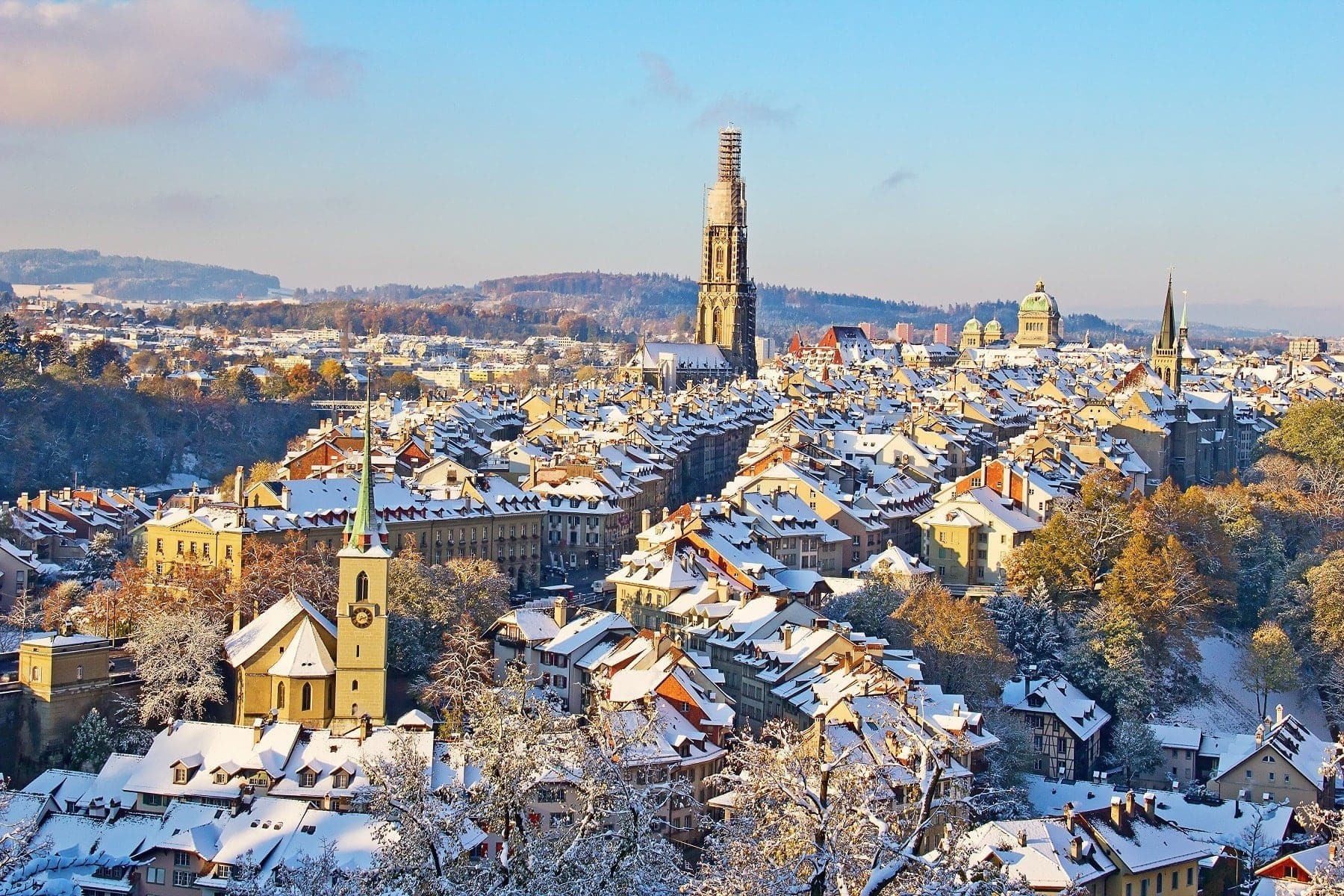Geographical characteristics in Switzerland
The three main geographical areas that make up Switzerland are :
- The Alps: they occupy 61% of the territory. This is where the highest peak in Switzerland is located: "La Pointe Dufour" (4,634 m).
- The Plateaux: a chain of hills that occupy more than 30% of the country's surface area
- The Jura Massif
Forests occupy 31% of the country's land area. Still in figures, the country has 6% of Europe's freshwater reserves, hence the name "Europe's water tower".

Climatic zones in Switzerland
Due to the large number of mountains, Switzerland has a variety of microclimates.
Switzerland's climate is mainly continental: temperatures are between 2 and 6°C in winter and between 20 and 25°C in summer. In contrast to the south of the country (Ticino), which is characterized by a Mediterranean climate (hot, dry summers, mild, wet winters).
Mountainous regions above 3,000 m are always snowy.
Useful links : Federal Office of Meteorology and Climatology - Weather Switzerland
When to go to Switzerland ?
The period between June and September remains the best time to discover Switzerland and make the most of its climate. However, if you wish to avoid the high season, the best time to visit is between April and May or between the end of September and October.
You can also plan your stay in Switzerland between the end of November and April if you are a big fan of snow sports.
 OUI
OUI
 NON
NON








 Merci
Merci